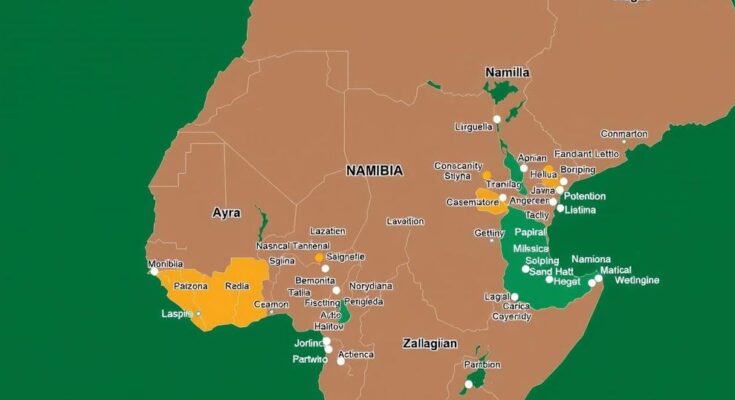Namibia’s upcoming election poses a critical challenge for SWAPO as voter dissatisfaction mounts due to economic hardships and government corruption. With a significant youth vote and recent setbacks faced by similar parties across southern Africa, the outcome could either reaffirm SWAPO’s dominance or usher in a new political era. The election is set against a backdrop of rising disillusionment among young voters, highlighting the urgency for political change in Namibia.
On Wednesday, Namibia’s electoral landscape will face a critical test as voters head to the polls, reflecting a trend of declining support for long-standing liberation parties in southern Africa. The South West Africa People’s Organization (SWAPO), which has dominated Namibia’s political scene since independence in 1990, will confront significant challenges stemming from high unemployment, government corruption, a housing crisis, and poor socio-economic conditions that have eroded its popularity. The political context surrounding this election has been marked by recent setbacks for other liberation parties in the region, with the African National Congress in South Africa losing its parliamentary majority for the first time since the end of apartheid, and the Botswana Democratic Party suffering a substantial electoral defeat. Furthermore, allegations of electoral manipulation have marred the recent election in Mozambique, raising concern over the integrity of the democratic process in the region.
Amidst rising discontent, especially among the youth—over 40% of registered voters in Namibia are aged 35 or younger—SWAPO’s ability to engage this demographic has become crucial. Political analysts have noted that the younger generation is less inspired by liberation narratives, as their concerns revolve around employment and economic stability. In an effort to attract young voters, SWAPO has recently leveraged popular culture by enlisting renowned South African artists for campaign events and has included younger candidates among their parliamentary nominees. However, despite the potential voting power of this demographic, their overall influence remains uncertain given historical trends that suggest young voters are less likely to participate in elections.
The socio-economic landscape in Namibia presents additional challenges for SWAPO. The country grapples with a significant housing deficit, and a substantial unemployment rate persists, deeply affecting public sentiment towards the ruling party. Observers highlight that these pressing issues are creating a rift between the party’s past achievements and the current reality that many Namibians face.
Nevertheless, there are factors that may favor SWAPO in the upcoming election. With 14 opposition candidates splitting the vote, SWAPO might manage to secure its hold on power. The primary opposition candidate, Panduleni Itula, who previously ran as an independent while still affiliated with SWAPO, could draw on a pool of protest votes against the late former president Hage Geingob. SWAPO’s continued dominance in rural areas, where it has focused its campaign efforts, suggests that it still retains a solid support base.
The political landscape in Namibia is shaped by the historical context of independence from colonial rule in 1990. SWAPO emerged as a prominent liberation movement and has governed since. Over the past few years, there has been a notable shift in voter sentiment towards established political parties, particularly among younger demographics, who are increasingly disillusioned with traditional narratives of liberation. This election is significant not just for its potential results but also as a reflection of broader regional trends affecting liberation parties across southern Africa.
In conclusion, the upcoming election in Namibia stands as a pivotal moment for SWAPO and the country’s political dynamics. With a significant youth electorate and prevailing economic hardships, the election will not only determine the future of SWAPO but will also indicate whether the political loyalties sustained from the liberation era can withstand the pressures of contemporary governance issues. Voter turnout and engagement from younger populations will be critical in shaping the election outcomes and potential changes in leadership.
Original Source: www.nytimes.com




